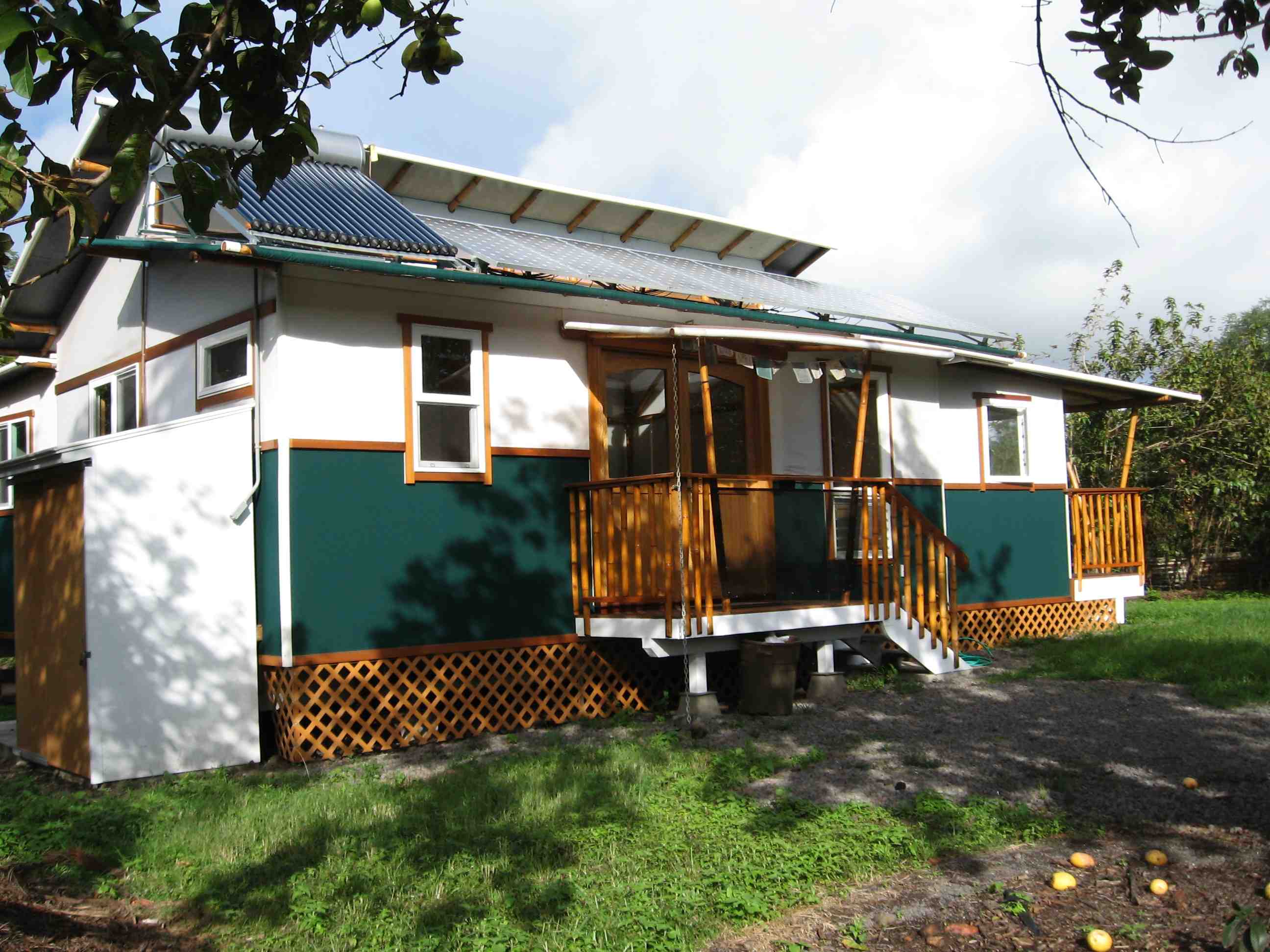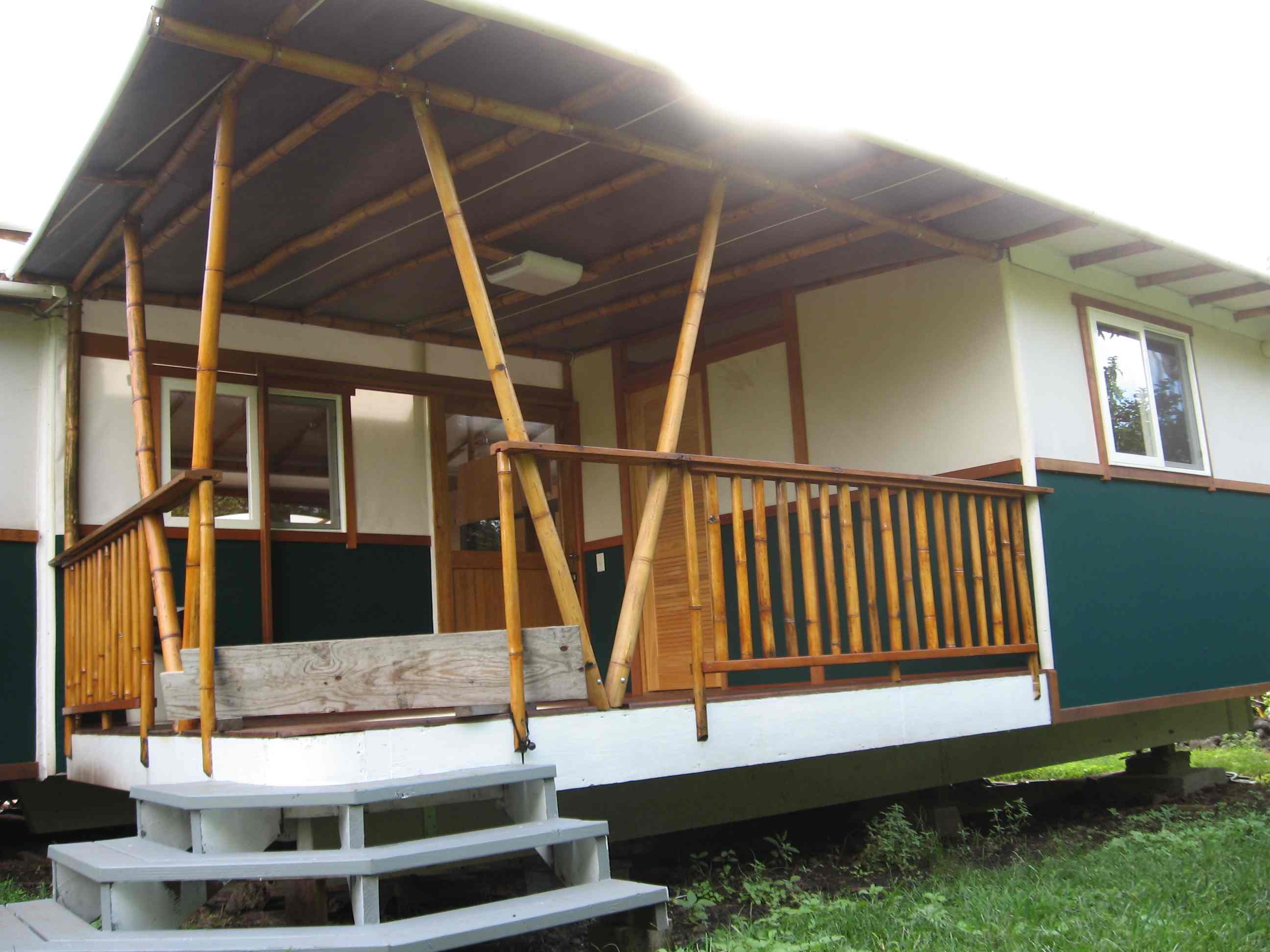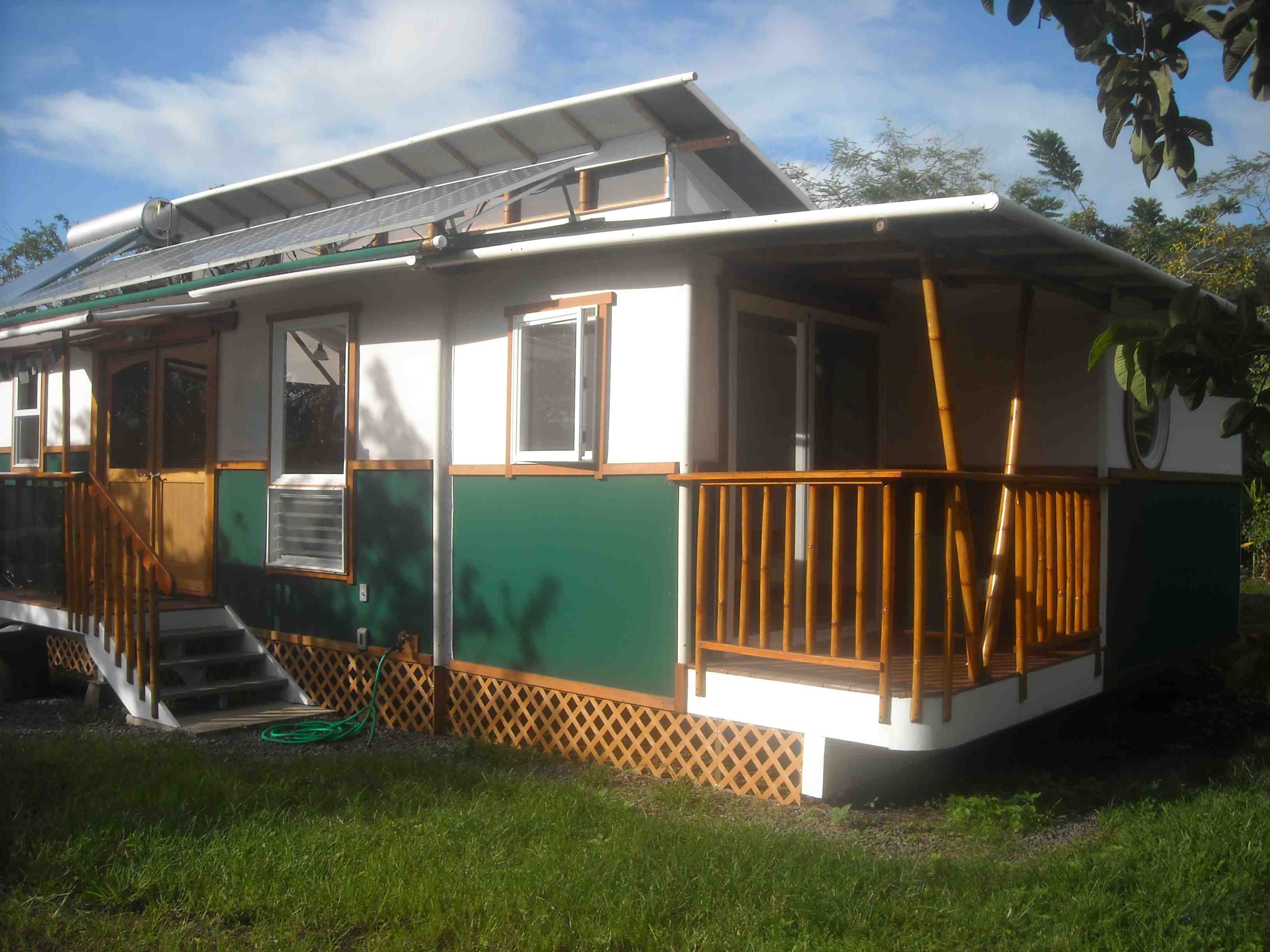Expanding minds with LSB - Lighter, Simpler, Better building technology.



Click here to change this text.
Expanding minds with LSB - Lighter, Simpler, Better building technology.



Click here to change this text.
As we enter the 2nd decade of this "Pacific Century," in which 7 billion of our fellow Planetary citizens all compete actively for resources in order to provide for their families, how can we--citizens of the over-consumptive First World nations--begin to seriously reduce our own ecological footprints on our fragile Mother Earth? Indeed, as resource gluttons(the U.S., with less than 5% of the world's population, consumes nearly 25% of the total global usage of resources), don't we bear special responsibility to develop lighter, simpler and better technologies, in our pursuit of meaning and happiness?
These critical questions were swirling around in my own mind in the late 1990s, even as I had been involved in designing and building custom homes for over 25 years in Hawaii. It was then that I committed myself to a personal mission toward "Expanding Minds with LSB--Lighter, Simpler and Better building technology," especially in regard to developing alternative solutions for our island homes.
The resulting decade-long development of an EcoCabana was built this past year on Hawaiian Home land, in the Panaewa area near Hilo airport. After experimenting with a couple of preliminary prototypes in nearby Kurtistown and Keaau ag lots, the specific form of alternative residence that I have settled on is my sustainable version of an EcoCabana, a 900-square foot, bamboo-framed, 2-bedroom, modular-designed unit that incorporates A)an off-grid 1.4-kilowatt photovoltaic(PV) electrical system, B)a "blackwater" bio-filter that composts toilet effluents into nutrients for green plants, C)material-saving box beam construction for structural supports, D)an engineered plywood deck atop individual concrete footings that use less than 20% of the concrete as compared to a conventional 4" house slab, E)natural hemp and commercial-grade Sunbrella fabrics for exterior covering, and F)waterproof EPDM membrane roofing.
The actual construction, started in the first week of December, 2010, took approximately 10 months. We were fortunate in that the legendary Hilo rains spared us for most of the first half of this year. Locally-grown guadua and hirose species of bamboo were purchased from commercial growers and promptly sent to HPM(Hawaii Planing Mill)for pressure treatment with a borate solution(similar to treatment for construction lumber). They were used for the framing columns, lintels and rafters for the 3 modules of the Cabana. Special, custom-designed metal connectors were fabricated to create bamboo joints that would resist earthquake and hurricane stresses. Finally, in keeping with the theme of using local building materials, eucalyptus robusta planks were used for the lanai decking, and the custom-built entry doors employed mango wood and bamboo inset panels. The completed EcoCabana was formally presented to the public at the September 11, 2011 Hawaii Bamboo Society's annual Festival held in Hilo's Papaikou hongwanji.
For more details and info on this innovative and sustainable building project, please contact Danny Li--a longtime supporter and past board member of Hawaii Peoples Fund --at, dlimay7@flex.com, telephone: 808-982-7147.
Contact: dlimay7@flex.com
Expanding Minds with LSB(Updated & Revised)
LSB—abt = Lighter, Simpler, Bolder appropriate building technology (LSB for short)Or
LSS2 = Lighter, Simpler, Bolder & Better solutions
MISSION STATEMENT:To actively seek, progressively nurture, and continually build upon lighter, simpler, economical, sustainable, creative & liberating technology (especially in housing construction) to serve human needs in this “Pacific Century.”
Premise #1Technology— like economic development— is NOT neutral or value-free. With careful selection and a steadfast commitment to a collective commonwealth, a proper mix of socially conscious and culturally sensitive technology can:
• encourage worker creativity,
• enhance collective solutions to community problems,
• empower popular participation & guidance of the vital economic enterprise.
Conversely, a naive acceptance of “conventional wisdom” technologies particularly those promoted within the current dominant culture of a Privatized Capitalist political—economy, would continue to:
• encroach on direct producers’ autonomy;
• encumber the traditional co—operative nature of production process with both governmental and corporate bureaucracy (witness the “Dilbert syndrome”);
• enslave the masses by stifling and channeling their mental outlook toward a narrow acceptance of privatized control of technological development.
Premise #2A major contradiction in the present “Pacific Century” is the growing dichotomy between the increasing socialized and interdependent nature of economic relationships and the opposite authoritarian trend of massive concentration (privatization) in the ownership and control of global resources. As was graphically pointed out in a public forum at the November, 1999 conference in Seattle (coinciding with the WTO meeting), when 200 of the world’s richest billionaires own more assets than the combined incomes of 2.4 billion (!) people—with all the obvious anti— democratic implications of such a distorted and rapacious arrangement— then there needs to be a fundamental change in the global economic structure.
Premise #3
Another pivotal contradiction (intrinsically related to premise #2 above) is the obscenely destructive level of consumption by citizens of the First World nations. If all developing nations were to emulate the lifestyle & consumption patterns similar to the Western countries’ “way of life,” there would simply not be enough clean air, water, energy, or even food supply to satisfy 7.0 billion profligate homo sapiens. Hence, it is imperative and incumbent upon First World citizens—who are after all the major global gluttons, polluters and “resource imperialists”—to lead the way in search of a simpler, less materialistic (i.e., less invasive), smaller footprint type of economic and technology paradigm. Small is not only beautiful, but imperative in our Planet’s post-petroleum future.
In my opinion, LSB is perhaps broadly and best defined as an integrated (or holistic, if you will) and dialectical (or “diabolical,” to free- market fundamentalists) relationship of human interaction with the physical environment; rather than simply as an alternative building technology, although that is certainly a central aspect of the LSB way. The regional—and culturally specific—form that I’d like to develop, in conjunction with other progressive and creative activists, is the bamboo/fabric structure built upon an engineered deck & individual footings type of Appropriate Technology (see a related article in the December, 1999 issue of the Hawaii Bamboo Society newsletter), which combines an optimal mix of high—and “low”—techs.
ADVANTAGESLSB technology can contribute positively in many ways, it can:
• enable individuals, together with others in a “self-help” community concept, to provide safe, comfortable and economical shelter for their families;
• liberate homeowners from the oppression of mortgages by lowering the initial building costs (the original meaning of a mortgage is “death pledge”!);
• use renewable/ sustainable local resources(primarily bamboo and other Hawaiian—grown lumber such as eucalyptus robusta; moreover, in the near future we can also encourage experimenting with locally—grown plant fibers—as hemp—for the fabric covering);
• lighten the impact on the environment (individual footings built on ground level use less than 20% of the concrete as compared to a conventional 4” house slab; in addition, the entire structure could be relocated/ removed by simply unbolting the galvanized metal connectors between the footings and the main support box beams); the emphasis is on leaving a “small footprint” on the earth*;
• will be also more earthquake—resistant/tolerant than a conventional floor slab, by allowing “independent suspension” action of the separate footings;
• limit the source of ground termite entry to a small number of footings, and together with metal pans, offer simple and periodic visual inspections of potential insect entry points.
CHALLENGESA) How to develop an affordable—not necessarily “cheap”—alternative building technology that is simultaneously highly hurricane—and insect—resistant, without at the same time, increasing demand on global energy, resources and human labor. (After all, the Earth will not support 7 billion McMansions!)**
B) How to seek out and improve over time, a user-friendly “technology with a human face,” in which collective creativity, co-operation and control are encouraged, as contrasted with the currently fashionable trend of glorifying private greed at the expense of the public good.
C) How to achieve both A) and B) above in an economically viable enterprise. This means paying careful attention to financial and cost accounting principles, but a narrow definition of “net profit” will not become the final arbiter in determining the long-term focus of the collective enterprise.
* See the “2001 Report— The Ecological Foot print” in the www.livingplanet.org web site.
**A socio-economic commentary regarding the exultation of the lifestyle of the rich and famous” is integral to the LSB perspective. The much-touted $300 million gill Gates estate—the supreme symbol of wasteful consumption—is a case by negative example. The diversion of resources in order to satisfy the rich and famous directly deprives those resources from fulfilling the housing demands of literally tens of thousands—if not more—of our “lesser-endowed” citizens. Worse yet, the over-emphasis on satisfying the elites’ lifestyle completely diverts the focus and talents of the best designers, suppliers and craftspeople (in short, the entire housing industry, estimated at over 10% of GDP) away from focusing on solving the real world housing problems of the vast majority of the needy. A “brain drain to disdain” the masses’ true needs is thus created and sanctified as the societal norm.
DL: Jan. 2000; (4th rev. 8/25/2011)